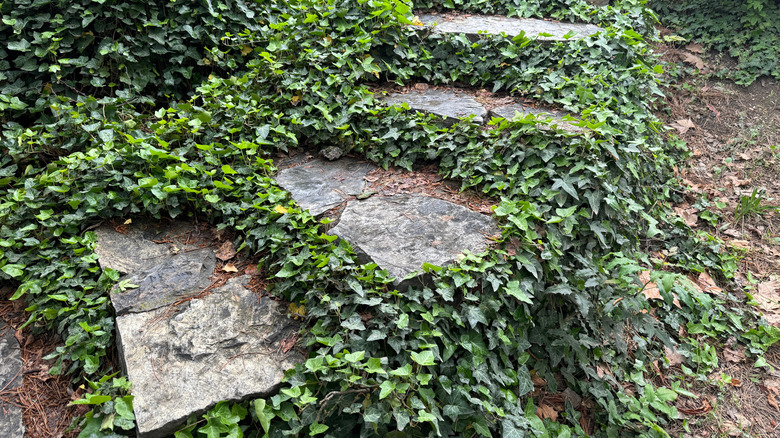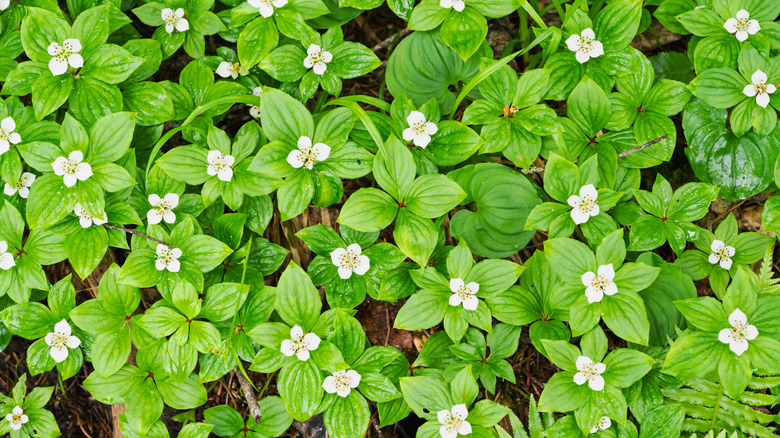Why You Should Reconsider Planting English Ivy And What To Plant Instead
English ivy is a plant that many people like to have in their gardens because of its elegant appearance and ability to grow quickly in shaded areas. On top of this, English ivy is a perennial that can not only grow up trees and trellises but also across the ground, making it a good option in a world where many gardeners are looking for low-maintenance alternatives to grass. Furthermore, those who are looking for a plant to grow up the side of a building often turn to English ivy for its ability to latch onto walls while helping regulate indoor temperatures and humidity. English ivy is also an evergreen and can add a pop of color to your yard and garden year-round. However, despite its many positive qualities, you should reconsider planting English ivy in your yard because, unfortunately, this plant also has a bad side.
In fact, English ivy is considered invasive in the United States because of its ability to spread quickly and choke out native plants that local insects and animals rely on. Plus, like most invasive plants, English ivy is quite difficult to get rid of once established, so much so that one Redditor on r/permaculture compared the task of eradicating this type of ivy to "siege warfare." If that's not all, English ivy has a tendency to damage the walls of the buildings it grows on and is one of those plants we recommend thinking twice about before growing near your home. Luckily, there is another plant that works as a great replacement for English ivy and is better for the environment — bunchberry.
Why you should plant bunchberry instead of English ivy
There are a few reasons why bunchberry (also known as creeping dogwood vine) is a better choice for most gardeners in America than English ivy. First of all, bunchberry has many of the same benefits of English ivy without causing ecological harm (as it is native to the Pacific Northwest and is considered noninvasive in North America). Bunchberry plants are also elegantly beautiful vines, just like English ivy, and produce bright green leaves with white flowers — so you won't feel like you are making a downgrade in the looks department when you make the switch. Furthermore, bunchberry is an evergreen vine that can grow in full and partial shade, meaning that it also provides a pop of color year round and will thrive in the same areas of your yard as English ivy.
Like English ivy, bunchberry is also a perennial, meaning you only have to plant it once and it will come back year after year. However, while English ivy actually produces toxic berries, bunchberry fruit is nontoxic and edible so you don't have to worry about your kids or pets getting a hold of them. Plus, because bunchberry is a native plant, its berries can help support the local wildlife, including woodland creatures like birds and deer. While bunchberry is mostly used as a ground cover plant and won't grow up trees or the walls of buildings, it is a sturdy ground cover that spreads at a manageable pace and is resistant to foot traffic, making it a great replacement for its invasive ivy counterpart.

